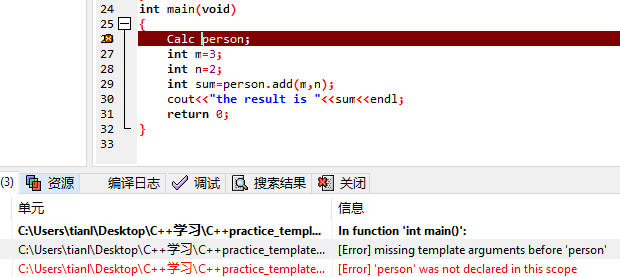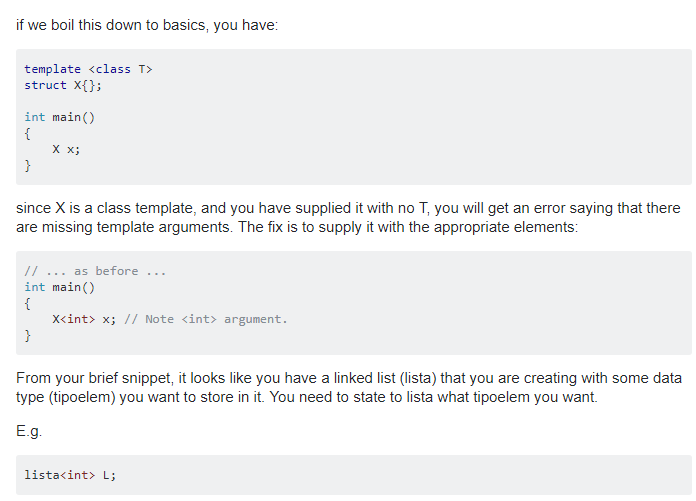一、模板类的说明
模板类有一个好处是可以放宽你输入的数据类型。
比如有这样的一个函数:
int add(int x, int y)
{
return x+y;
}
这个函数对于int类型的x,y才适合,但是如果我们希望计算float类型的呢?
这必须重新定义一个函数(函数重载也可以实现)
float add(float x, float y)
{
return x+y;
}
但是这样显然太麻烦,所以模板类可以解决这个问题
二、一个例子
书上的一个例子用作说明
#include <iostream>
using namespace std;
template <typename Type> //这一步说明了你要定义一个模板类,数据类型名字是Type(比如可能是int, float,等等)
class Calc
{
public:
Calc ();
Type multiply (Type x, Type y);//类型都是Type
Type add (Type x, Type y);//这里是函数的声明
};
template <typename Type> Calc<Type>::Calc ()
{ }
template <typename Type> Type Calc<Type>::multiply (Type x, Type y)
{
return x * y;
}
template <typename Type> Type Calc<Type>::add (Type x, Type y)//这里是函数定义
{
return x+y;
}
int main(void)
{
Calc<int> person;
int m=3;
int n=2;
int sum=person.add(m,n);
cout<<"the result is "<<sum<<endl;
return 0;
}
三、运行错误
最开始初始化的时候,我是这样写的:
Calc person;
但是失败了,结果如下:

后来查了一下,发现需要在初始化的时候传入一个数据类型,告诉程序你要存储什么数据。
有人给了一个解答:
https://stackoverflow.com/questions/33413084/missing-template-arguments-before-l
截图如下:

讲的很透彻^-^